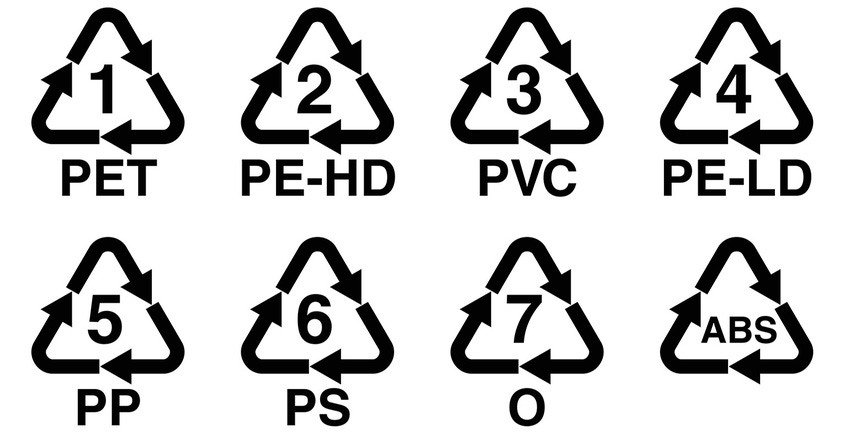Are Chemical Recycling Claims Sometimes Misleading? Yes and No . . . But Mostly, Yes
Plastics 1, 3, and 7 technically could be chemically recycled, as some claim, if everything is sorted up front or treated at the back end at exorbitant cost. In other words, it’s possible with an unlimited budget. But when has that ever happened?
March 25, 2021

On Sunday, March 22, John Oliver did an in-depth piece on HBO’s Last Week Tonight devoted to waste plastics recycling. He highlighted correctly the challenges of handling plastics labeled with resin identification codes 1 to 7, which is complicated for consumers. However, his point — illustrated by “chasing arrows” — that no scaled solution exists for most plastics is inaccurate. Molecular recycling can tackle plastics 2, 4, 5, and 6, but claims by some chemical recyclers are complicating this further.
When explaining the molecular recycling process at Nexus, with a focus on 2 (HDPE), 4 (LDPE), 5 (PP), and 6 (PS) waste plastics, we’re often asked: “Well, so-and-so company announced that it takes plastics 1 through 7 or 3 through 7. Is your technology inferior, narrower, not as flexible…?”
The answer is: No.
Nexus’ core technology – pyrolysis – is similar to others. The fundamental processes involving plastic pyrolysis were patented in the 1960s and those patents have long expired.
First, it’s basic chemistry.
When it comes to waste plastics, one can claim to take anything through the front door: PET (1); PVC (3); nylons, urethane, polyesters, polycarbonates, thermosets, etc. (7); tires, glass, diapers, consumer waste, the kitchen sink — you name it. However, the science of pyrolysis is clear: Plastics 1, 3, and 7 do not convert to marketable, recycled-virgin-plastic precursors. Instead, these materials create unsellable chloride and sulfur-laden, charred liquids.
PET is a plastic molecule that contains a lot of oxygen, which creates char and other undesirable products when heated. Pyrolysis literally means heating in the absence of oxygen, and PET does not do well in that context. The C in PVC stands for chloride, one of the main elements that needs to be kept out of any refinery cracker. Oil accepted into the refinery has to have very low chloride content or it can cause major problems for the equipment. Nylons, urethanes, ABS, thermosets, and so forth fall in the catch-all number 7 category, and either don’t convert to oil or produce toxic by-products (like hydrogen cyanide) and can damage the pyrolysis processing equipment. All bad.
Second, it’s economics.
Remove it at the front end or treat it at the back end — either way, it has to come out if you want to sell the products. And that costs money.
You either sort plastics 1, 3, and 7 before they enter your pyrolysis system, or you treat the now-contaminated off-take after it comes out the back end using distillation, hydrotreating, etc. On an unlimited budget you can sort and post-treat all you want. But budgets usually are not unlimited, and neither consumers nor off-take partners will pay extravagant prices simply to say it’s recycled.
Supply and demand dictates that if recycled plastics prices are exponentially higher than virgin plastic made with “raw” hydrocarbons, then people will buy what’s less expensive. That is precisely why plastic is so prevalent — it has extraordinarily diverse physical properties at incredibly low cost.
At Nexus, the focus is on plastics designated as 2, 4, 5, and 6, with a tolerance for contamination from plastics 1, 3, and 7 along with some non-plastics because they allow for the manufacture of desirable products at acceptable prices. These types of plastics are significantly abundant and, when economically converted back into virgin recycled plastic, provide the circular solution we all seek.
Without this focus, there is no economically viable off take, which means there is no large-scale recycled-content plastic available at an acceptable price.
But there’s more. Because pyrolysis in and of itself is not unique, it’s critical to be zealous about efficiency. In order to make pyrolysis succeed, we do a few things well at Nexus and we do thousands of little things really well, resulting in high efficiencies at less than one third the cost of others. None of this includes the extra cost and effort of pre-sorting or post-treatment. We start by using the facts above to our advantage while still expanding what we can take. The waste plastics in our environment can be significantly reduced just by processing plastics 2, 4, 5, and 6 without the need to claim otherwise.
So, is it misleading/confusing to say you can take plastics 1, 3, and 7? Yes. Those plastics don’t chemically convert into usable plastics precursors. No, because if money were no object, you could sort everything up front and/or pay enormous amounts for post-treatment. But cost matters. If it didn’t, we’d likely see a lot more advanced recycling technologies producing at scale, at a reasonable price. So, saying they take the full spectrum of plastics is mostly confusing. That said, we sincerely hope all players striving to convert waste plastics into usable chemical feedstocks achieve success — the waste plastics problem is too big and important for them, and for us, not to succeed. On that point, John Oliver is very much correct.
About the author
Eric Hartz is President and co-founder of Nexus LLC, a commercial-scale molecular recycler converting waste plastics into virgin plastics. The 100% circular process is ISCC Plus certified. Nexus has produced more than 300,000 gallons for customers like Royal Dutch Shell and Chevron Phillips Chemical. Investors include Cox Enterprises, a $21-billion family-owned business committed to global sustainability.
About the Author(s)
You May Also Like


